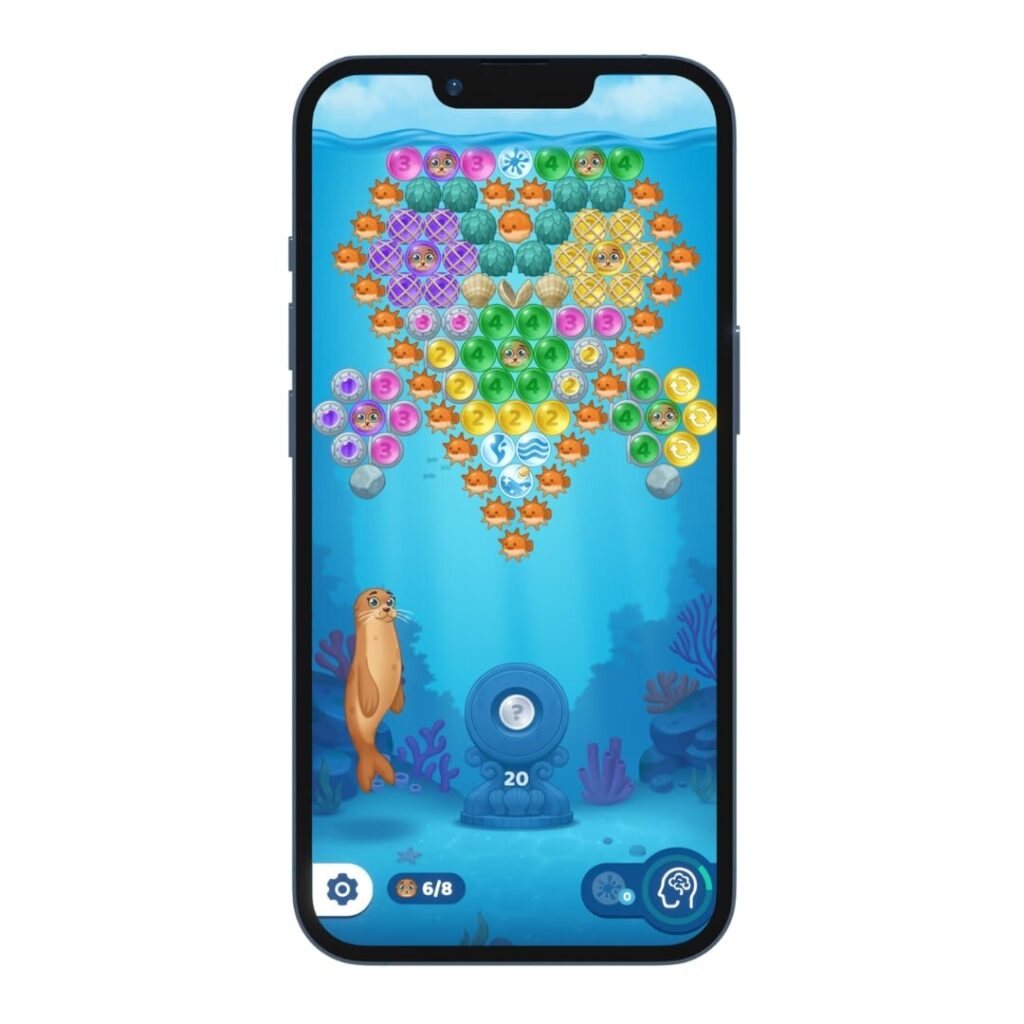An Israeli startup has developed a video game for the phone that aims to retrain the nervous system of people with chronic pain in order to ease their suffering.
The haptic mobile game created by Tel Aviv and New York-based company TrainPain is designed to help the player improve their brain’s natural ability to dial down pain.
Chronic pain affects a large swathe of people across the globe. According to the US National Library of Medicine, 20 percent of adults worldwide suffer from some form of chronic pain and another 10 percent are diagnosed each year.
The game is downloaded from the iOS or Android store just like any other app. However, it is accompanied by a small pod about the size and shape of an earphone case that connects to the phone or tablet via Bluetooth. Inside the pod are two haptic simulators attached to it by narrow cables, which are placed on either side of the body in corresponding locations.

The user connects one of the simulators in an area close to where they feel their chronic pain, such as a knee or shoulder, and the other in the same location on the opposite side of the body. Once they are in place, the game can be played.
One of the games closely resembles a normal bubble shooter, but instead of colors, the balls already on the screen each display a low number such as 1 or 2. One of the simulators on the body will pulsate a set number of times to signify what number the new ball will carry once it has been launched.
“Let’s say, for example, you feel three gentle pulses, then you know that this is going to be a ‘3’ bubble,” TrainPain co-founder and CEO Dr. Elan Schneider, an experienced physical therapist with a specialty in rehabilitation of chronic pain, tells NoCamels.
To begin playing, the user taps a new ball that pops up at the bottom of the screen. At that point, the screen will ripple on one side to inform the player to direct the new ball to either the left or the right, and the simulator on the corresponding side of the body will then pulsate to indicate the number of the ball.
As soon as the simulator indicates the number of the ball, the simulator on the opposite side will begin to vibrate continuously, in order to train the brain to stop focusing on the pain.
“Scientists have known for many years, but the public isn’t as aware, that the nervous system has the ability to dial up or dial down the amount of pain we feel, but there have not been tools until now to retrain this function,” says Schneider.
As the player plays the game, algorithms measure and learn about the player’s sensory perception abilities, and adjust the difficulty of the training tasks.
The player’s success rate in sending the balls to the right spot indicates how well they are responding to the treatment and how able they are to ignore their chronic pain.

“Based on how you shoot we start to learn whether you’re feeling it accurately or not,” says Schneider.
The game collects data on the performance of the player, and Schneider says it can even tell whether a person suffers from complex pain by the way that they play and the way their brain processes the sensations.
“We compare people who have chronic pain and people who are healthy and in just [playing] this game for 10 minutes, the researchers can actually see a difference between people who have pain and people who don’t,” he explains.
After every level the player gets feedback on their progress, as well as helpful tips about their health.
Sign up for our free weekly newsletter
SubscribeThe game was developed with input from a former head of game design at Google and a creative director for the extremely popular Candy Crush mobile game. A designer from the Candy Crush team also created the different levels, Schneider says.
The idea for the game came while Schneider was working as a physical therapist in a hospital. He saw many people were dealing with severe chronic pain apparently triggered by a minor health issue – and vice versa – and that didn’t always make sense to him.
“Sometimes people would have really small injuries but a tremendous amount of pain that wouldn’t go away. And sometimes people would have huge injuries and very little pain,” Schneider says.
He also realized that there were not many non-medication tools that incorporated recent neuroscience discoveries to help people care for their pain on an ongoing basis.
Together with TrainPain co-founder and CTO Laurence Nash, an engineer, Schneider started to develop the game and the accompanying haptic device in 2018.

To get off the ground, the company was given a grant from the Israel Innovation Authority, the government branch dedicated to promoting the country’s high-tech sector, as well as receiving funds from private investors.
Today, the TrainPain game is being marketed in the US. The kit costs a one-time fee of $99 and the game a monthly subscription of $10.
The company is also starting to work with the Maccabi health maintenance organization in Israel, aiming to provide the technology to Israelis from the south of the country who were wounded in the massive terror attack on October 7 or whose trauma may have exacerbated existing ailments.
“Due to the situation, there’s a lot of people who have pain from injuries, and people who had pain before and now because of the trauma and stress that pain has gotten worse,” says Schneider.
He explains that the company is delivering it as a simple selfcare tool that people can use at home to reduce discomfort and support them in their recovery from injury and trauma.
“We’re deploying this as a public health initiative,” he states.
To Schneider, opioid medication that some people receive to deal with complex pain has the potential to cause more problems as it can be extremely addictive.
“Unfortunately, there’s lots of opportunity [for the company] as there’s many people dealing with pain,” says Schneider.
“Our motivation is to create solutions that are accessible and effective, and that people actually want to use.”
Related posts

Editors’ & Readers’ Choice: 10 Favorite NoCamels Articles

Forward Facing: What Does The Future Hold For Israeli High-Tech?

Impact Innovation: Israeli Startups That Could Shape Our Future




Facebook comments